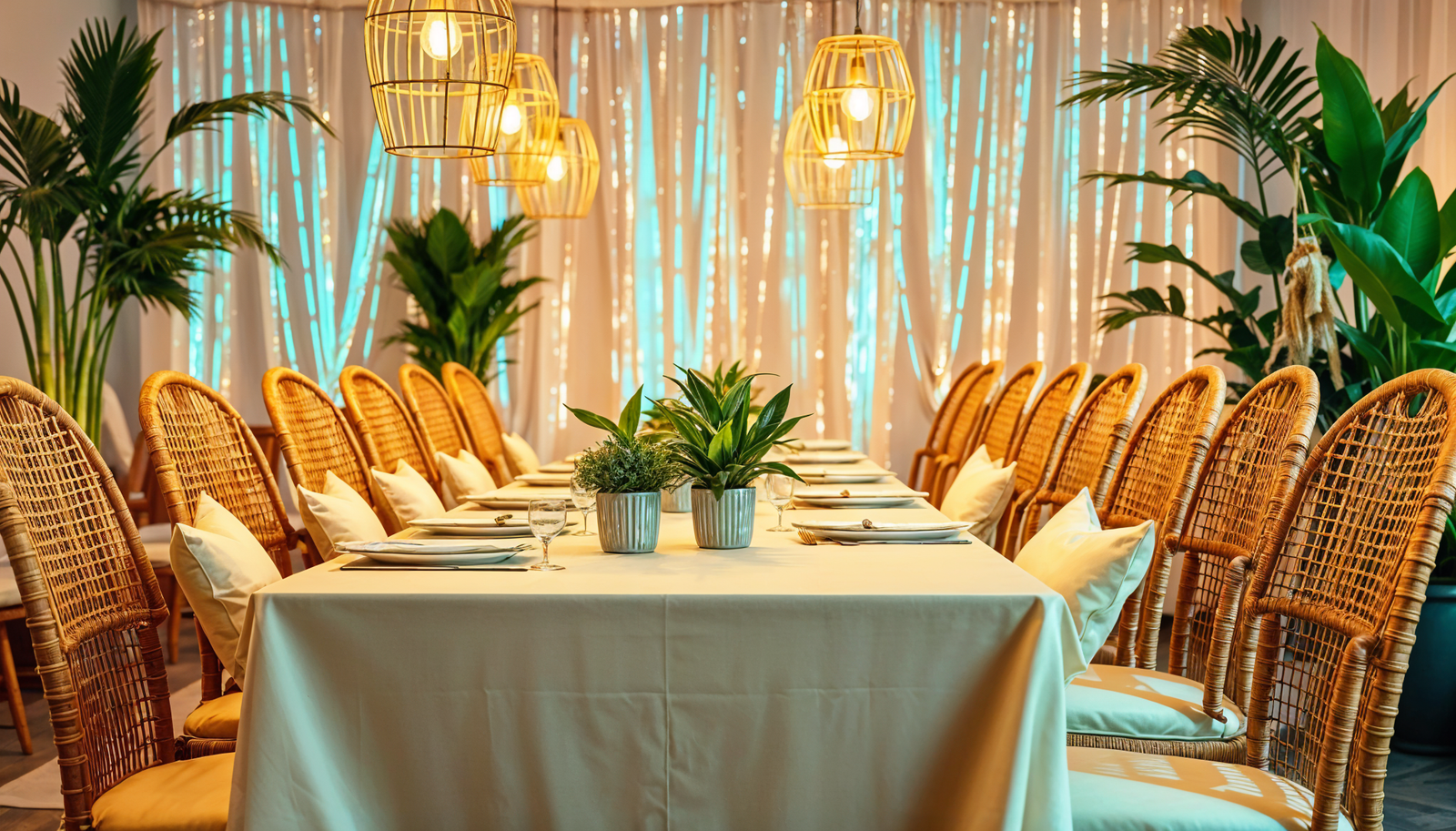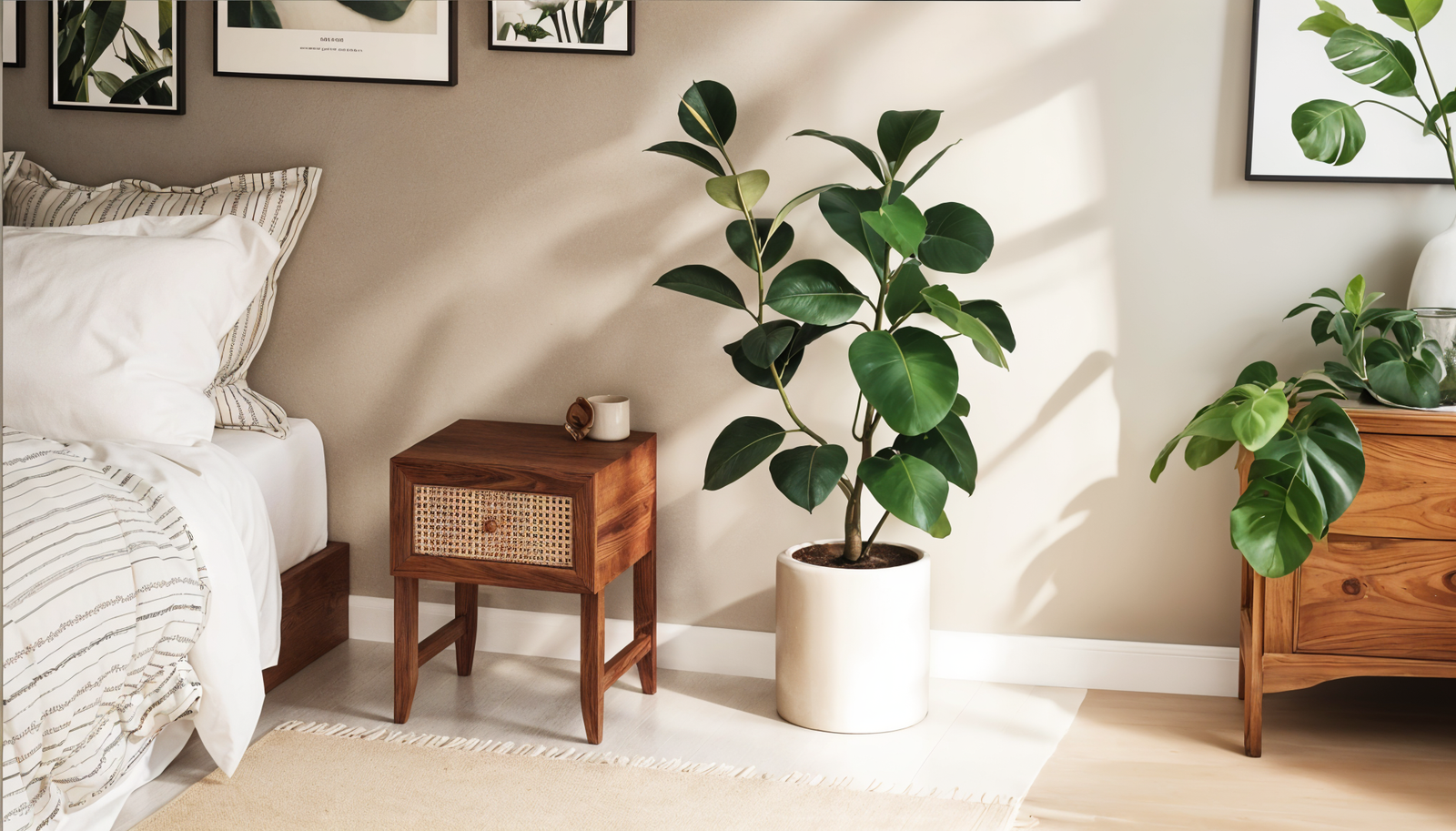🤍 Unmatched Quality, Authentic Craftsmanship
🤍 Unmatched Quality, Authentic Craftsmanship
🤍 Unmatched Quality, Authentic Craftsmanship
Bamboo furniture has gained popularity in recent years due to its eco-friendly nature and unique aesthetic appeal.
However, before investing in this type of furniture, it's important to understand its lifespan and durability.
How long can you expect your bamboo furniture to last?

In this comprehensive guide, we will explore the factors that influence the lifespan of bamboo furniture, from the quality of the materials used to the care and maintenance practices.
We will also provide tips and tricks for extending the lifespan of your bamboo furniture, ensuring that you get the most out of your investment.
So, if you're considering adding bamboo furniture to your home or office, keep reading to learn everything you need to know about its lifespan and how to make it last.
When it comes to assessing the lifespan of bamboo furniture, one important factor to consider is its overall durability.
After all, poorly crafted or low-quality materials may not last as long as furniture made with better components.
There are several factors that can affect the lifespan of bamboo furniture.
The most important factor when it comes to assessing the lifespan of bamboo furniture is the quality of the materials used in its construction.
High-quality bamboo will be more durable and better able to withstand wear-and-tear, while cheaper materials may not last as long.
In addition to the quality of materials used, other factors, such as the design of the furniture and how it is cared for, can also influence its longevity.

Bamboo is known for its natural strength and durability, making it a popular material for furniture.
Bamboo has a tensile strength that is comparable to steel, allowing it to withstand wear and tear over time.
Its natural hardness also makes it resistant to scratches and other damage.
This makes bamboo furniture perfect for high-traffic areas, as it can handle everyday use without showing signs of wear.
Proper maintenance and care for bamboo furniture is essential to ensuring its longevity and extending its lifespan.
Maintain your bamboo furniture with these tips:
After having a complete understanding of bamboo furniture in terms of durability, we will now discuss the average lifespan of bamboo furniture.
The average lifespan of bamboo furniture is determined by the quality of materials used and the care given, typically ranging from 5 to 15 years.
Various species of bamboo used in bamboo products can also influence the lifespan of furniture.
Generally, bamboo furniture made with higher-quality materials can last up to fifteen years with proper care and maintenance.
However, bamboo furniture made with lower-quality materials only lasts for five years.
Fortunately, there are several steps you can take to extend the lifespan of your bamboo furniture.
By following these tips, you can ensure that your bamboo furniture lasts for years to come.
The lifespan of bamboo furniture can vary depending on the quality of materials and construction used.
Higher-quality components and better craftsmanship can extend the lifespan of your bamboo furniture.
The type of bamboo used is also important, as some bamboo species are more durable materials than others.
Moso, Guadua, Tonkin, and Maedu are all types of bamboo that are often used for furniture.
Bamboo furniture can last for years with proper care and maintenance. You can extend the lifespan of your bamboo furniture by taking a few simple steps.
After learning about the average lifespan of bamboo products, we will discuss indicators of wear and tear in bamboo furniture over time.

As bamboo furniture ages, there are certain signs of wear and tear that may be visible.
These indicators can help you determine when it is time to replace or repair any damaged pieces.
Common signs of deterioration in bamboo furniture include cracking, warping, discoloration, and splintering.
Over time, the bamboo may start to weaken and become brittle due to constant exposure to moisture or sunlight.
This weakening causes wood fibers to loosen and lead to surface cracks in furniture.
Warping is a common sign of wear and tear in bamboo furniture due to moisture or extreme temperatures.
Finally, discoloration and splintering are also common with aging bamboo furniture.
Identifying and addressing issues early on is crucial for the lifespan of bamboo furniture, as it helps prevent further damage and ensures longevity.
One way to identify issues early on is to regularly inspect your furniture for signs of wear and tear.
Look for cracks, warping, discoloration, or splintering in the wood.
If any of these signs are present, repair or replace the piece as soon as possible.
Regular maintenance, like dusting and cleaning, can help you spot problems early and make your bamboo furniture last longer.
Eventually, it may become time to replace your bamboo furniture due to wear and tear.
After inspecting your furniture for signs of deterioration, you should consider replacing pieces if they cannot be repaired.
If the frame or joints have weakened or cracked beyond repair, or if discoloration and splintering are extensive, it may be best to replace the piece.
Now, let's learn some tips for maintaining and preserving bamboo furniture after understanding the signs of wear and tear.
Maintaining and preserving bamboo furniture is essential in order to extend its lifespan.
Let's explore some important tips in detail, such as cleaning, dusting, protecting from sun and moisture, applying protective coatings, and ensuring proper storage and handling.
Cleaning and dusting bamboo furniture on a regular basis is important to maintain its appearance and extend its lifespan.
For general cleaning, use a damp cloth or wood cleaner and wipe down the surface of the furniture.
For deeper cleaning, you can use a soft brush to remove dirt and debris from in between the slats or joints.
Additionally, it’s important to dust your bamboo furniture on a weekly basis to prevent dust from building up and causing damage.
Excessive exposure to moisture or sunlight can cause the wood fibers to weaken and lead to cracks, warping, discoloration, and splintering.
There are several ways you can protect your bamboo furniture from these elements:
In short, regular inspections and maintenance, along with proper storage and handling, can help you extend the life of bamboo furniture.
You can also apply protective coatings or treatments, such as borax and boric acid solutions, to extend the lifespan of your furniture.
Protective coatings, like lacquer or shellac, help protect against moisture damage and protect the wood fibers from weakening.
In addition to protective coatings, treatments such as oiling and waxing can be used to prevent cracking and splintering.
However, it’s best to check with the manufacturer before applying any treatment or coating to your furniture.
Proper storage and handling will prevent damage from happening in the first place.
To ensure your furniture is stored correctly, make sure the environment is well-ventilated and free of moisture.
Additionally, it’s best to avoid stacking objects on top of bamboo furniture, as this can cause scratches or chips.
Lastly, when moving bamboo furniture, make sure to lift it properly and use furniture sliders to avoid damaging the floor.
Now that we have discussed preserving and caring for bamboo items, let's have a deep dive into the sustainable and eco-friendly aspects of bamboo furniture.
Bamboo furniture is considered an excellent option due to its sustainability and eco-friendly characteristics. It is a renewable resource that grows quickly, making it ideal for furniture manufacturing.
Let's explore the sustainable aspects of bamboo furniture in detail.
Bamboo is a renewable and environmentally friendly material that can be used to make furniture.
Bamboo is considered one of the most sustainable materials because it is the fastest-growing plant and easily replenished.
The low water content of bamboo plantings makes it an ideal material for furniture production.
Bamboo requires fewer fertilizers and pesticides than other wood materials, which means it has a lower environmental impact.
In addition, the production of bamboo furniture does not require the use of any hazardous chemicals or toxins, making it a safe choice for your home.
It is also considered a carbon-neutral material since it absorbs more carbon dioxide than it emits during production and transportation.

Choosing bamboo furniture for its sustainability benefits is a smart decision.
Bamboo is one of the most sustainable options available, as it grows quickly and requires fewer chemicals and pesticides than other wood materials.
Additionally, the production of bamboo furniture does not involve the use of hazardous chemicals or toxins, making it an excellent choice for furniture for your home.
Furthermore, since it absorbs more carbon dioxide than it emits during production and transportation, bamboo is considered a carbon-neutral material.
With proper care, maintenance, and storage, you can extend the life of your bamboo furniture for many years to come.
Now that you have a complete understanding of bamboo furniture, let's address some of the most commonly asked questions regarding bamboo.
After reading through the information provided above, you may still have some lingering questions about the lifespan of bamboo furniture.
In this section, we aim to address some of the frequently asked questions on this topic.
Let's dive in!
Yes, bamboo furniture can be repaired if it gets damaged.
Bamboo is a naturally strong and perfect material for furniture that is highly durable and repairable.
Depending on the severity of the damage, repairs can be made using wood glue or clamps.
If the damage is too severe, replacement parts may need to be purchased from a specialty retailer.
Bamboo is a natural material that can be affected by exposure to sunlight, just like any other wood furniture.
Over time, the color of bamboo furniture may fade or turn yellow due to prolonged sun exposure.
Additionally, direct sunlight may cause bamboo fibers to become brittle and dry out, leading to cracking and warping of the furniture.
Yes, bamboo furniture can be used in humid environments.
Bamboo is a naturally moisture-resistant material, making it well-suited for humid climates.
It resists rotting and mold growth due to its natural anti-bacterial properties and does not warp or swell when exposed to moisture.
When it comes to the lifespan of wood from a bamboo plant, there are a few key differences between solid bamboo and bamboo veneer furniture.
Solid bamboo furniture is generally considered to be more durable and long-lasting than its veneered counterpart.
This is because the material used for solid bamboo furniture is denser, making it less susceptible to warping or cracking over time.
Additionally, the natural anti-bacterial properties of solid bamboo furniture make it more resistant to mold and mildew.
On the other hand, bamboo veneer furniture is generally thinner and less durable than solid bamboo furniture.
While it may look visually appealing and resist moisture damage, it is not as hardy as solid bamboo furniture and may need to be replaced sooner.
In conclusion, the lifespan of bamboo products can vary depending on various factors, such as quality, maintenance, and usage.
Generally, well-made bamboo furniture can last for several years, with some pieces lasting up to 20 years or more.
However, factors like exposure to sunlight, damage from moisture, and improper care can shorten its lifespan.
To extend the lifespan of your bamboo furniture, it is important to keep it away from direct sunlight, use protective coatings, clean it regularly, and avoid placing heavy objects on it.
Additionally, if your bamboo furniture gets damaged, it can often be repaired or restored by professionals.
By taking proper care of your bamboo furniture, you can enjoy its beauty and functionality for many years to come.


